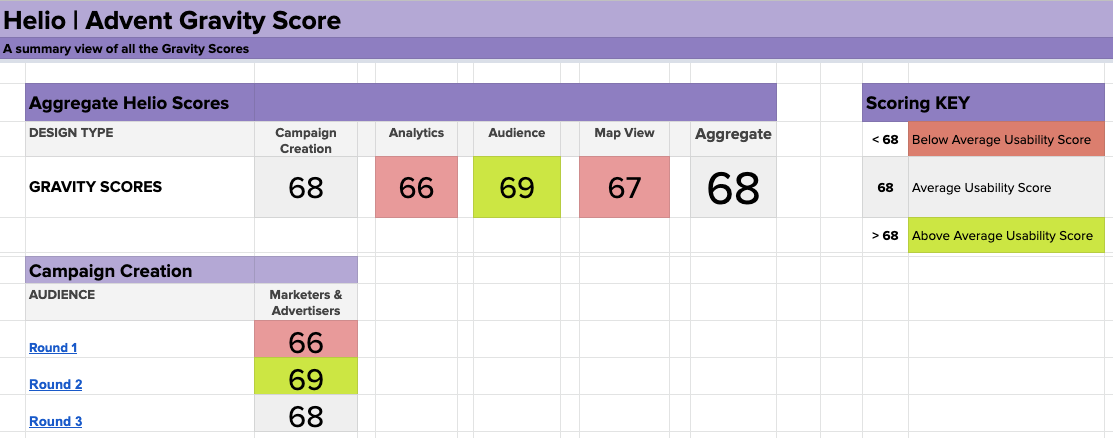User Surveys Template: Simplify Data Collection and Boost User Engagement
User surveys are a powerful tool that can provide valuable insights into user behavior and preferences. By gathering feedback directly from users, businesses can make informed decisions, improve their products or services, and enhance user engagement. In this article, we will explore the importance of user surveys, how to design effective surveys, and how to simplify the data collection process. We will also discuss strategies for boosting user engagement through surveys and how survey data can be analyzed and utilized for actionable insights.
🔩 The Nuts and Bolts:
- Direct Pathway to User Preferences and Behaviors
User Surveys Template offers a structured approach to capturing valuable feedback, enabling businesses to effectively understand and meet user needs. - Simplifies Complex Data Collection Processes
Leveraging the User Surveys Template streamlines data collection and analysis, facilitating the swift gathering of both qualitative and quantitative insights. - Drives Product and Service Enhancements
Insights derived from the User Surveys Template guide targeted improvements, ensuring products and services align closely with user expectations and demands. - Boosts User Engagement and Brand Loyalty
Engaging users through surveys enhances their connection to the brand, fostering loyalty by making users feel valued and heard. - Identifies Emerging Trends and User Demands
Regular feedback collection using the User Surveys Template helps businesses stay ahead by identifying and adapting to changing user trends and preferences. - Enables Personalized User Experiences
Data from the User Surveys Template can inform personalized marketing strategies and product customization, enhancing user satisfaction and retention rates. - Facilitates Strategic Business Decision Making
Comprehensive insights from the User Surveys Template empower businesses to make informed strategic decisions, drive growth, and maintain competitive advantage.
Understanding the Importance of User Surveys
When understanding your users, there is no substitute for direct feedback. User surveys allow you to gather qualitative and quantitative data, giving you a complete picture of user needs and preferences. This information can help you identify areas for improvement, discover new opportunities, and make data-driven decisions.
You can gain valuable insights into your target audience by conducting user surveys. You can learn about their demographics, such as age, gender, location, and occupation, which can help you tailor your products or services to their needs. Additionally, user surveys can provide information about their preferences, interests, and behaviors, allowing you to create personalized experiences that resonate with them.
One of the key advantages of user surveys is the ability to collect qualitative and quantitative data. Qualitative data helps you understand the “why” behind user behavior and preferences. It allows users to express their thoughts, opinions, and experiences in their own words, providing rich and meaningful insights. On the other hand, quantitative data provides measurable metrics, such as ratings, rankings, and percentages, which can be analyzed statistically to identify trends and patterns.
The Role of User Surveys in Data Collection
User surveys play a crucial role in data collection. They allow users to share their thoughts, opinions, and experiences, allowing you to collect rich and meaningful data. You can dig deeper into user motivations, pain points, and desires by asking the right questions.
When designing a user survey, it is important to consider the goals and objectives of your research. Are you looking to gather feedback on a specific feature or product? Are you interested in understanding user satisfaction or loyalty? By defining clear objectives, you can tailor your survey questions to collect the most relevant data.
In addition to gathering data, user surveys can serve as a platform for users to provide suggestions and ideas for improvement. By including open-ended questions or comment boxes, you allow users to share their innovative ideas, which can lead to valuable insights and potential product enhancements.
Enhancing User Engagement through Surveys
Surveys can also boost user engagement. Involving users in the decision-making process makes them feel valued and heard. This, in turn, increases their connection to your brand and encourages them to continue using your product or service.
When users feel that their opinions matter and that their feedback is being considered, they are likelier to develop a sense of loyalty towards your brand. This can increase customer retention and advocacy, as satisfied users become brand ambassadors and recommend your product or service to others.
Furthermore, surveys can be an excellent tool for gathering testimonials and success stories. By asking users to share their positive experiences or outcomes they have achieved with your product or service, you can collect valuable content that can be used for marketing purposes. Testimonials and success stories provide social proof and build trust, which can influence potential customers to choose your brand over competitors.
In conclusion, user surveys are a powerful tool for understanding your users, collecting data, and enhancing user engagement. By leveraging survey insights, you can make informed decisions, improve your products or services, and build strong relationships with your users. So, don’t underestimate the importance of user surveys, and start incorporating them into your research and decision-making processes today!
Make your design decisions count.
Subscribe to Design Under Pressure. Get insights, UX metrics, and tools for bold, informed design.
We respect your inbox. Just insights. No fluff. Privacy Policy.
Designing Effective User Surveys
Designing surveys that yield accurate and useful data is essential. Gathering insights from user surveys can provide valuable information for improving products, services, and user experiences. Here are some key elements to consider when creating your user survey template:
Critical Elements of a User Survey Template
A well-designed survey starts with clear objectives. Determine what information you need to collect and tailor your questions accordingly. Are you looking to understand user preferences, gather feedback on a specific feature, or assess overall satisfaction? Defining your objectives will help you create targeted questions that provide meaningful insights.
Keep your survey concise and focused, using simple language that is easy for users to understand. Long and convoluted surveys can lead to respondent fatigue and decrease participation rates. Keeping your survey short and to the point increases the likelihood of obtaining a higher response rate.
Use a mix of question types to gather different types of data. Multiple-choice questions are great for collecting quantitative data and providing users with predefined options. Rating scales allow users to express their opinions on a scale, providing valuable insights into user satisfaction levels. Open-ended questions allow users to provide detailed feedback and suggestions, which can be particularly useful for uncovering new ideas or identifying pain points.
Tips for Creating Engaging and Informative Surveys
To ensure high survey participation and quality responses, follow these tips:
- Keep the survey length reasonable to avoid respondent fatigue. While gathering comprehensive data is important, respecting your users’ time is equally important. Consider breaking down longer surveys into multiple shorter surveys or prioritizing the most critical questions.
- Consider offering incentives to increase participation rates. Incentives can range from small discounts or gift cards to exclusive access to new features or services. By providing a tangible benefit, you motivate users to take the time to complete the survey.
- Use clear instructions and guide users through the survey. Begin with a brief introduction that explains the purpose of the survey and how the data will be used. Provide clear instructions for each question, ensuring users understand what is expected of them.
- Avoid leading or biasing questions that may influence responses. It’s important to maintain objectivity when designing survey questions. Avoid using leading language or providing clues that may sway users’ responses. This will help ensure that the data collected is unbiased and truly reflects users’ opinions.
- Regularly update and refine your survey to address changing needs. As your product or service evolves, so should your survey. Keep track of emerging trends, user feedback, and industry best practices to ensure your survey remains relevant and effective.
By incorporating these key elements and tips into your user survey template, you can create a comprehensive and insightful survey that provides valuable data for making informed decisions and improvements.
Simplifying Data Collection with User Surveys
Collecting and organizing survey data can be daunting, especially when dealing with a large number of respondents. However, there are tools and techniques available that can streamline the process. Consider using online survey platforms with features like automated data collection and analysis. These platforms save time and effort, allowing you to focus on interpreting and utilizing the data.
One such platform is SurveyMonkey, a popular online survey tool offering various features to simplify the data collection process. With SurveyMonkey, you can easily create customized surveys with various question types, from multiple-choice to open-ended questions. The platform also allows you to distribute your surveys via email, social media, or embedded links on your website, making it easy to reach a large audience.
But it doesn’t stop there. SurveyMonkey also offers automated data collection and analysis features, which can significantly reduce the time and effort required to collect and organize survey data. The platform automatically collects and compiles responses, eliminating the need for manual data entry. It also provides real-time analytics and reporting, allowing you to gain insights from your survey data quickly.
Ensuring Data Accuracy and Consistency
Accurate data is crucial for drawing meaningful conclusions. To ensure data accuracy, develop validation rules to catch errors and outliers. For example, you can set up skip logic, which allows you to ignore specific questions based on previous responses. This helps to ensure that respondents only answer relevant questions, reducing the chances of inaccurate or inconsistent data.
In addition to validation rules, it is important to ensure your survey questions are clear and concise to avoid ambiguity or confusion. Use simple language and avoid jargon or technical terms that may be unfamiliar to your respondents. Consider conducting a pilot test of your survey with a small group of participants to identify any potential issues or areas for improvement.
Another way to ensure data accuracy and consistency is to provide clear instructions and examples for each question. This helps respondents understand what is expected of them and reduces the likelihood of misinterpretation. You can also include a progress bar or indicator to show respondents how far they are in the survey, which can help keep them engaged and motivated to complete it.
By following these precautions, you can improve the reliability and consistency of your survey data. Remember, accurate and well-organized data is the foundation for making informed decisions and driving meaningful insights for your business or research.
🚀 If you’re using Helio
Accurate and well-organized data is the foundation for making informed decisions

Driving meaningful insights for your business or research.
Boosting User Engagement through Surveys
Strategies for Increasing Survey Participation
Getting users to complete your survey can be a challenge. To increase participation rates, consider implementing the following strategies:
- Keep your survey invitations concise and engaging.
- Send reminders to non-responders to prompt them to participate.
- Use various channels to reach your users, such as email, social media, and in-app notifications.
- Thank participants and communicate the value of their feedback.
Maintaining User Interest and Engagement
Consider implementing interactive elements to maintain user interest and engagement throughout the survey process. For example, incorporate progress bars or completion percentages to show users how far they are into the survey. Additionally, it provides an option for users to save their progress and complete the survey later. By making the survey experience interactive and user-friendly, you can increase participation and prevent drop-offs.
Analyzing and Utilizing Survey Data
Interpreting Survey Results for Actionable Insights
Once you have collected substantial survey data, it’s time to analyze and interpret the results. Look for patterns, trends, and correlations in the data to gain insights into user preferences and behaviors. Use these insights to inform decision-making, improve your product or service, and enhance the user experience.
Leveraging Survey Data for User Experience Improvement
Survey data can be a goldmine of information for improving the user experience. Identify areas where users encounter difficulties or frustrations and prioritize improvements based on the feedback received. By leveraging survey data, you can make data-driven decisions that result in higher user satisfaction and engagement.
In conclusion, user surveys are key in simplifying data collection and boosting user engagement. By understanding their importance, designing effective surveys, streamlining data collection, and analyzing survey data, businesses can gain valuable insights and make informed decisions. Remember to prioritize user engagement and maintain interest throughout the survey process. With the right approach, user surveys can be a powerful tool for improving the user experience and driving business growth.
User Survey FAQs
User survey templates are pre-designed questionnaires to gather user feedback about their experiences with a product or service. They are crucial for collecting structured feedback efficiently, enabling businesses to understand user needs, preferences, and pain points, and ultimately enhance user experience and satisfaction.
User survey templates simplify data collection by providing a standardized format for asking questions and gathering responses. This streamlines the process, making it easier to design surveys, distribute them to a broad audience, and analyze the data systematically. Using platforms like SurveyMonkey further automates data collection and analysis, saving time and reducing errors.
An effective User survey template should have clear objectives, concise and focused questions, a mix of question types (multiple-choice, rating scales, open-ended), and a user-friendly design. It should be tailored to gather the specific information needed while being engaging and accessible to ensure high participation rates.
To increase participation, businesses should keep surveys concise, offer incentives for completing the survey, use clear and engaging language, and distribute the survey through multiple channels. Sending reminders and expressing appreciation for feedback can also motivate users to participate.
Maintaining user interest and engagement can be achieved by designing interactive and visually appealing surveys, using progress bars, allowing users to save and resume later, and ensuring the survey is mobile-friendly. Providing immediate value or insights upon completion can also enhance engagement.
Analyzing data from User Surveys involves identifying response patterns, trends, and correlations. Businesses should look for common themes, user preferences, and areas of dissatisfaction. Combining quantitative data with qualitative feedback provides a comprehensive view that can inform decision-making and strategic planning.
User Surveys significantly impact business growth and user experience by providing direct insights into user needs and behaviors. This feedback informs product development, enhances user satisfaction, identifies opportunities for innovation, and builds stronger relationships with users, contributing to increased loyalty and advocacy.



